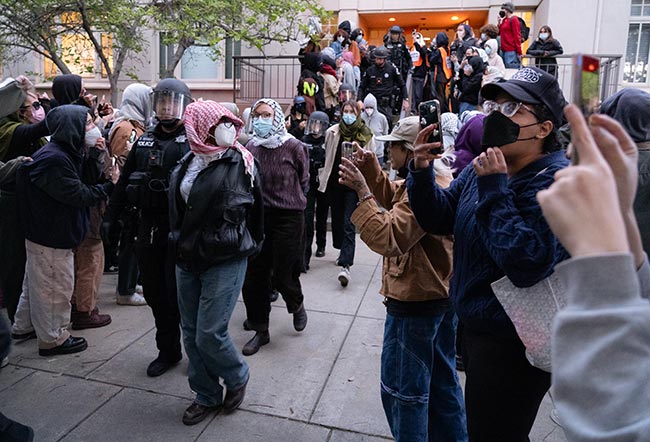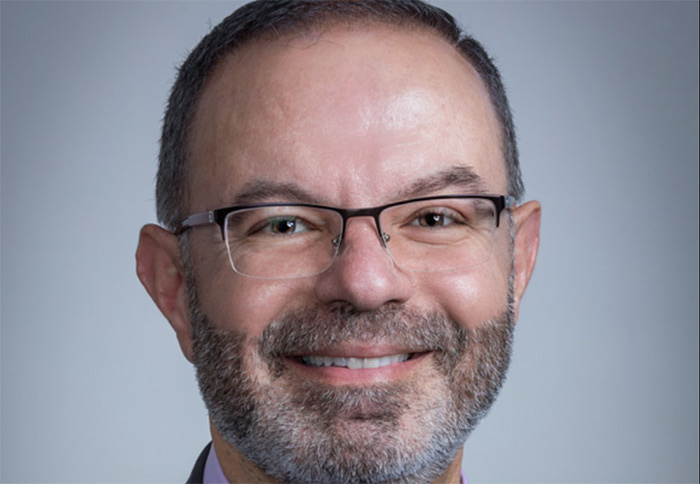David Oxtoby reflects on his 14 years at Pomona College
At his inauguration 14 years ago, Pomona College President David Oxtoby borrowed from W.E.B. DuBois.
“The function of the university—and, I would add, the liberal arts college—is not simply to teach bread-winning, or to furnish teachers for the public schools, or to be a centre of polite society; it is above all to be the organ of that fine adjustment between real life and the growing knowledge of life, an adjustment which forms the secret of civilization.”
The sentiment from Mr. DuBois, an author, civil rights activist and the first African American to earn a doctorate, resonated with Mr. Oxtoby.
“It’s such a broad quote, from an advocacy point of view,” he said. “And it was way ahead of its time. It reminds me of language Obama uses.”
And so began Mr. Oxtoby’s tenure as Pomona College’s ninth president. As the former dean of physical sciences at the University of Chicago, he joined Pomona College in 2003 with an established reputation for environmental chemistry, a subject he notes is at the heart of his interest and research experience.
“I’ve taught second semester every year,” he said. “Due to extra travel, I had to give it up this year, but only reluctantly.”
His passion for the environment proved to be a boon for the college. He hired the college’s first sustainability coordinator and raised the school’s Green Building Standards from a standard LEED-certification to Gold, with aspirations for Platinum-level d
As a climate change researcher, Mr. Oxtoby said meeting these standards was of critical importance to him.
“It’s an opportunity for us to involve the students, as well,” he said. “They join in the process and say, ‘How can we get this even more sustainable?’”
He took sustainability to new heights at Pomona. From 2007 to 2015, the college built or upgraded eight buildings to Gold or Platinum rating, including two new green dorms. The fact that parking lots don’t even qualify for LEED didn’t stop him, and he insisted the south campus parking structure be built to a Gold standard.
But perhaps the most ambitious project—and further evidence of Mr. Oxtoby’s propensity to blend the arts and sciences—was construction of the $29 million Gold-certified Studio Art Hall.
“The design, with its signature openings to the wider campus, invites other disciplines into the space to spark new and innovative ways of thinking and creating art,” he said after the building’s 2014 opening.
From day one—his inauguration speech was titled “The Place of Prometheus,” in reference to Orozco’s mural at Frary Dining Hall—his objective was to offer competitive programs in all disciplines, including the arts.
“Some say when you study and write, it’s academic, but that art is somewhat extra-curricular. It’s not,” he said. “Art is a core part of the liberal arts experience.”
Under Mr. Oxtoby’s leadership, the college added James Turrell’s Skyspace, saw the school’s glee club enjoy several international tours and added its first tenure-track positions in the dance department.
Most notably, however, was the launch of the new Pomona College Museum of Art. After what he describes as a “challenging process,” Mr. Oxtoby remains optimistic about the museum’s arrival, and believes it will be a huge asset to both the college and the community.
“To me, the town/gown connection is for our students, staff, faculty and the community,” he said. “Whenever we are recruiting students or hiring a faculty member, studying or working here is a major selling point. The vitality of this community is critical to us.”
Nurturing the town/gown connection started simply and, some might say, rather un-academically. Mr. Oxtoby recalls one of his first invitations after arriving in Claremont was a trip to a local bowling alley with the mayor.
This gesture set the stage for the Oxtoby family, which includes his wife, Claire, and their three children. Ms. Oxtoby dove in to civic life, joining the Friends of the Claremont Library board and maintaining active engagement with groups like CLASP.
Ms. Oxtoby, as her husband related, recently commented on the college’s open event schedule—from talks to free orchestra performances to public art shows—appreciating that they are not limited to abstruse lectures offered solely to faculty but can be enjoyed by any community member.
This community engagement played a part in Pomona College re-acquiring Bridges Auditorium from the Claremont University Consortium in 2007 “for about $1,” he said. Pomona has so far invested about $1 million toward renovating the theater, an effort he hopes will continue after he leaves.
Mr. Oxtoby has shared the theater with the community, by inviting Claremont public school kids to performances and hosting the annual end-of-the-year CHS Theater Department musical.
Although located in the center of the Pomona campus, Big Bridges was built in the 1920s as a consortia building for use by all of the Colleges.
“[The Colleges] are unique being a consortium,” he said. “That’s good and bad. We each have our own agendas and we need to have our own [community] relationships. Colleges have faculty and students, which consortia don’t have. Town/gown needs to be through the individual colleges, not necessarily through a faceless consortium.”
Despite his many accomplishments, Mr. Oxtoby’s 14 years at the helm of Pomona College weren’t without controversy. There was the 2008 dust-up over the Alma Mater song and a short-lived squabble over Mr. Oxtoby signing the Amethyst Initiative, which aimed to lower the drinking age from 21 to 18.
He’s certainly dealt with more serious incidents, like the suicide of English and creative writing professor David Foster Wallace and the murder-suicide involving Howard Jackson, a longtime adjunct professor in classical Greek and religious studies. For Mr. Oxtoby, these moments of tragedy aren’t simply part of the job.
“You never know what can happen,” he said. “I look at reports after every weekend and ask, ‘Were there transports? Were there any incidents?’ It’s constant background anxiety.”
Most recently, the Claremont Colleges have experienced a surge in student protests, largely relating to Deferred Action of Childhood Arrivals (DACA). As a leader on this front, and long before DACA, Mr. Oxtoby amended guidelines at Pomona College for all high school senior applicants—instead of basing students’ status on where they were born, the college opted to use their graduating high school to determine residency.
“Why were we treating these students differently? At that point, we started looking at high school graduates the same, regardless of citizenship. There was a financial commitment with that—we had to make a bigger investment—but we made that investment.”
His financial investment extended beyond DACA students when, in 2008, Pomona College removed student loans from its financial aid packages, replacing the funds with scholarships.
But his support for immigrant students persisted. In November 2016, Mr. Oxtoby led the Claremont Colleges by signing a “Statement in Support of the DACA Program and Our Undocumented Immigrant Students.”
With the current protests, Mr. Oxtoby understands that it goes beyond just rejecting President Donald Trump’s policies. For most students, it’s personal.
“The protests today are aimed at someone who the students think can change things,” he explained. “Students today care less about causes and more about people. It affects someone they know and they want to do something to support that person.”
Protests and hurdles surrounding the museum aside, Mr. Oxtoby resists the notion of identifying a high or low point in his career.
“I’ll miss the rhythm of the year,” he said. “First the new students arrive and then at the end of the year, it’s theses and protests. I wouldn’t pick a time and say, ‘That was my favorite.’ My last year was different from what I had predicted last summer, but I wouldn’t change it.”
This summer, Mr. Oxtoby will return to his alma mater, Harvard University, where he has accepted a one-year visiting scholar position in the graduate school of education.
“I will be writing, doing faculty work and teaching some classes,” he said. “But I’ll be back to Claremont in October for the inauguration. And, of course, to see friends.”
—Kathryn Dunn
editor@claremont-courier.com








0 Comments